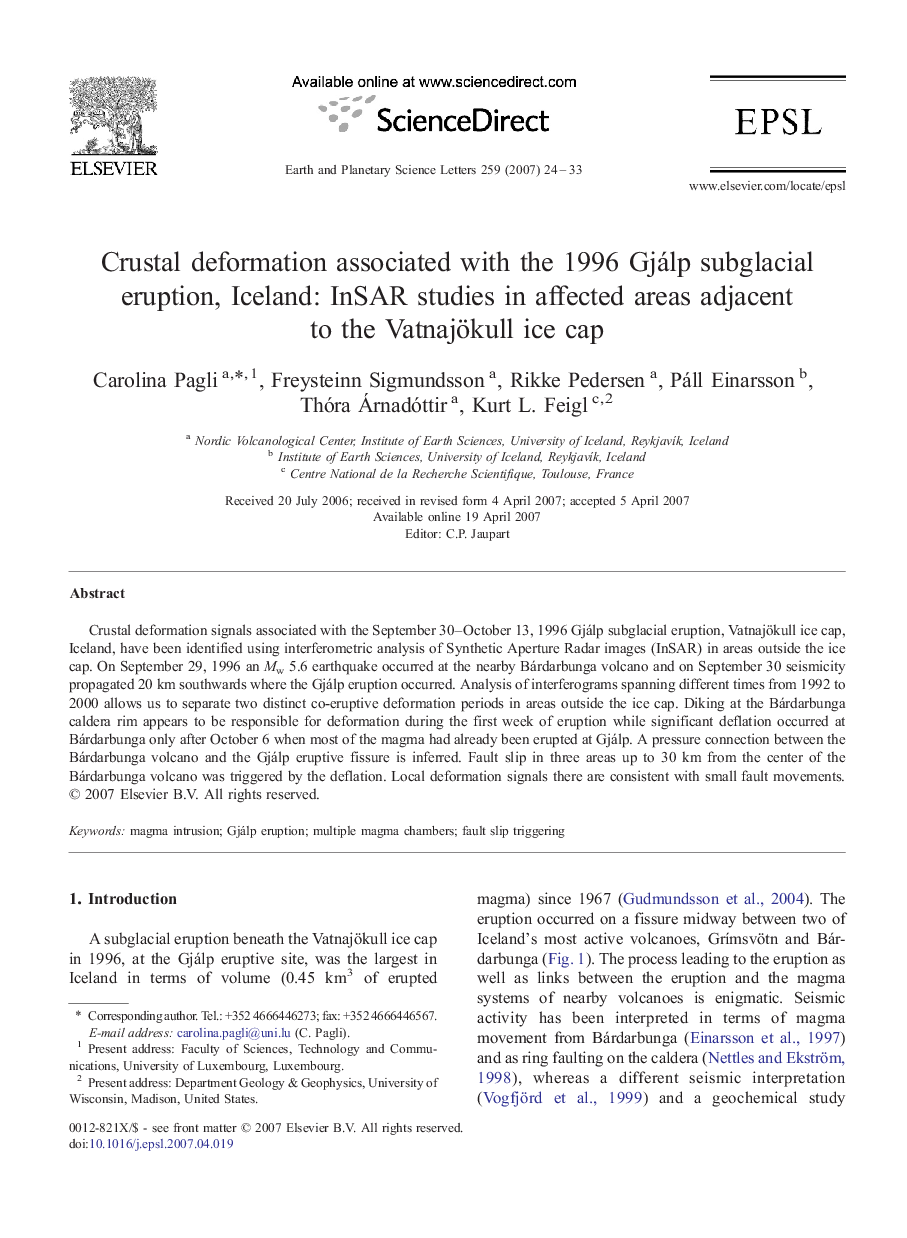| Article ID | Journal | Published Year | Pages | File Type |
|---|---|---|---|---|
| 4680278 | Earth and Planetary Science Letters | 2007 | 10 Pages |
Crustal deformation signals associated with the September 30–October 13, 1996 Gjálp subglacial eruption, Vatnajökull ice cap, Iceland, have been identified using interferometric analysis of Synthetic Aperture Radar images (InSAR) in areas outside the ice cap. On September 29, 1996 an Mw 5.6 earthquake occurred at the nearby Bárdarbunga volcano and on September 30 seismicity propagated 20 km southwards where the Gjálp eruption occurred. Analysis of interferograms spanning different times from 1992 to 2000 allows us to separate two distinct co-eruptive deformation periods in areas outside the ice cap. Diking at the Bárdarbunga caldera rim appears to be responsible for deformation during the first week of eruption while significant deflation occurred at Bárdarbunga only after October 6 when most of the magma had already been erupted at Gjálp. A pressure connection between the Bárdarbunga volcano and the Gjálp eruptive fissure is inferred. Fault slip in three areas up to 30 km from the center of the Bárdarbunga volcano was triggered by the deflation. Local deformation signals there are consistent with small fault movements.
